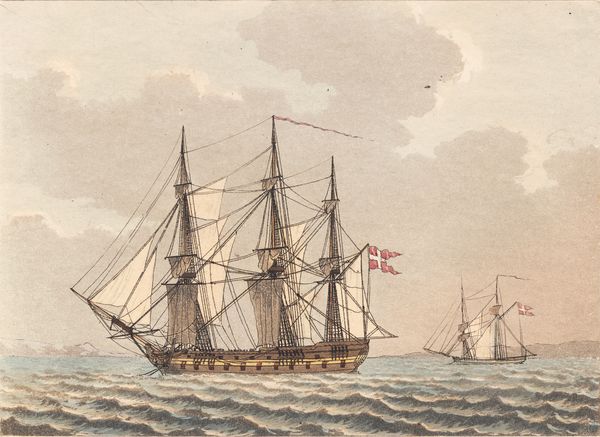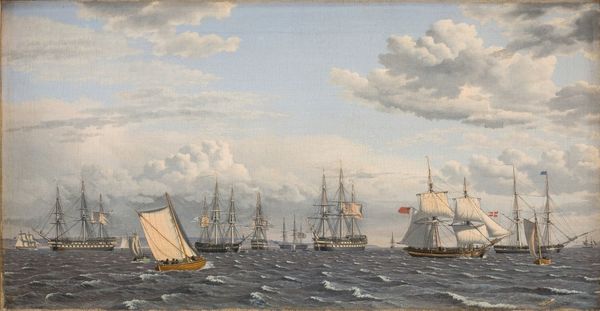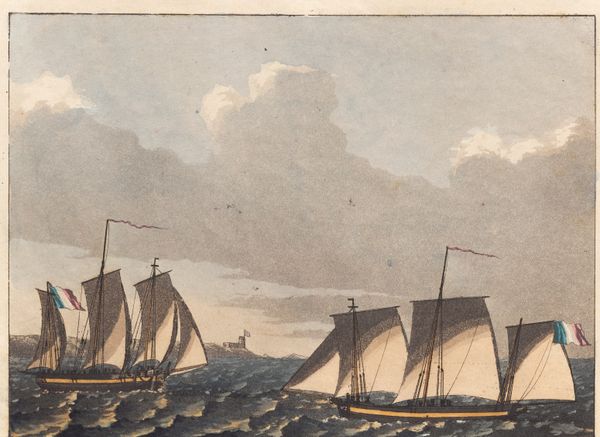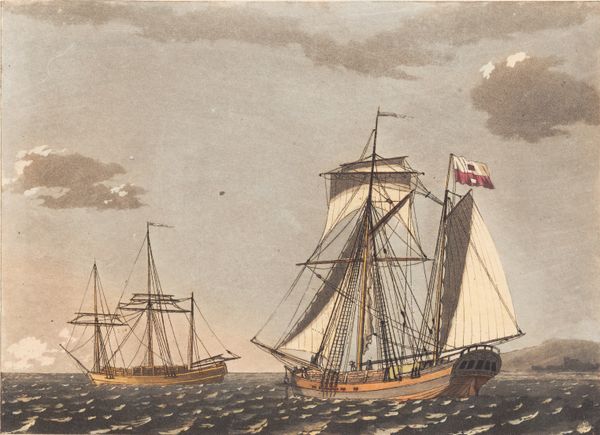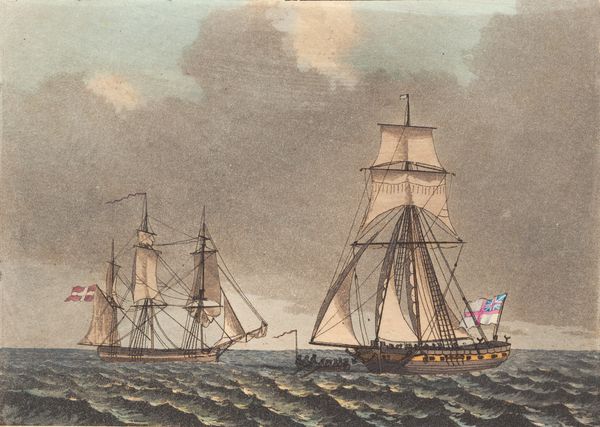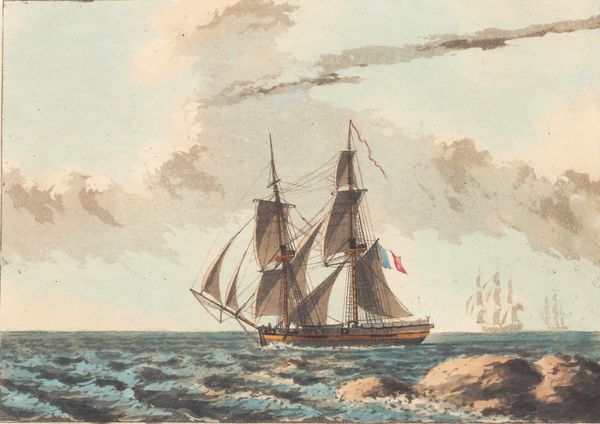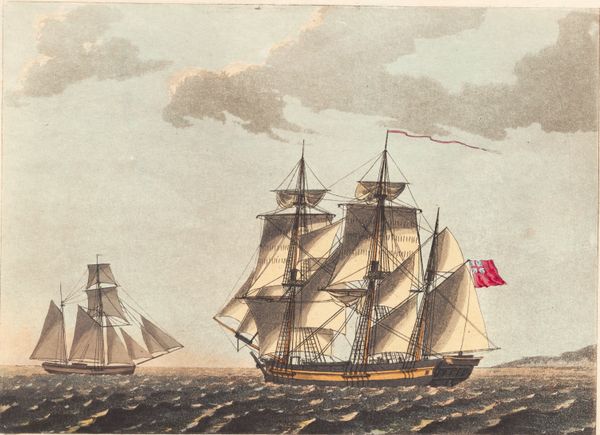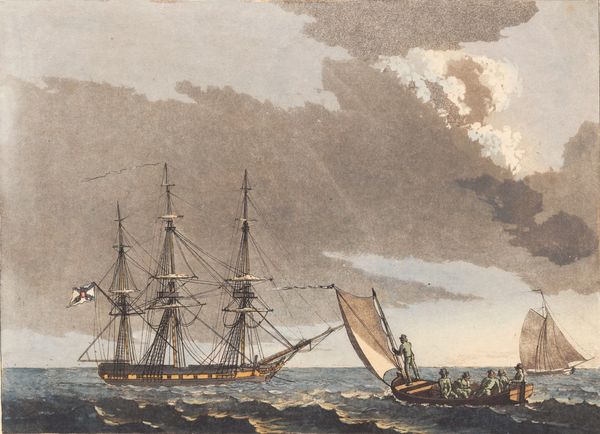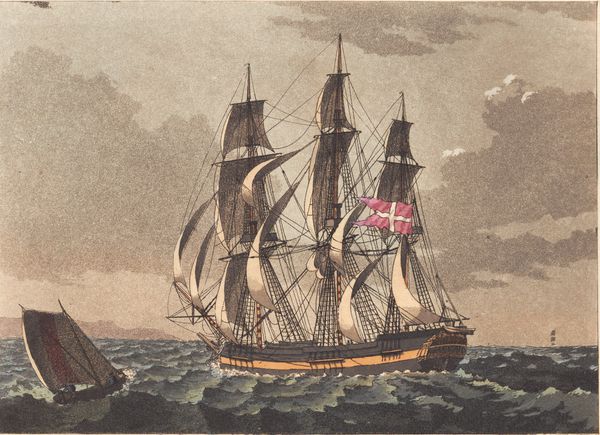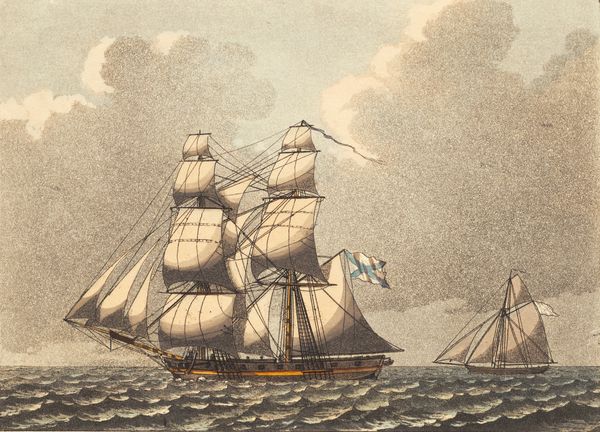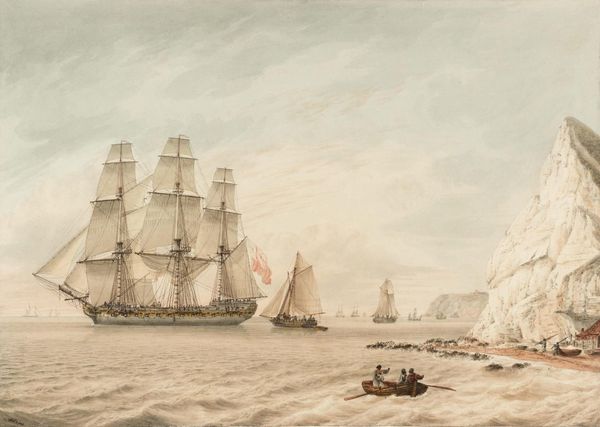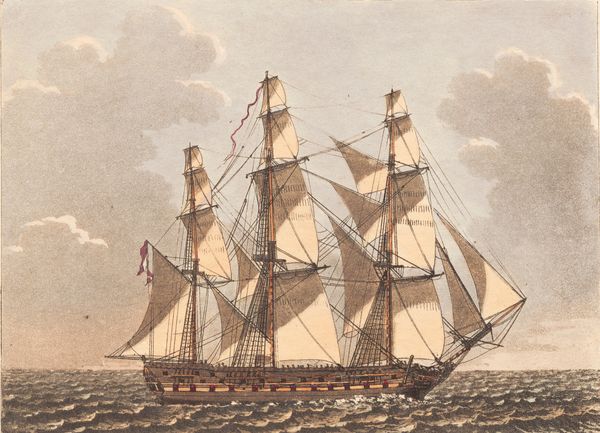
Franske orlog skibe til ankers, og en båd, som krydser 1805
0:00
0:00
aquatint, print
#
aquatint
# print
#
landscape
#
romanticism
#
genre-painting
Dimensions: 188 mm (height) x 235 mm (width) (bladmaal), 160 mm (height) x 215 mm (width) (plademaal), 140 mm (height) x 196 mm (width) (billedmaal)
This print of French warships at anchor was made by Niels Truslew, who was active around the turn of the 19th century. It’s an etching – an image incised into a metal plate with acid, then inked and printed onto paper. Look closely, and you can see the qualities of the line, the crispness of the sail rigging and the waves. Note the thin paper and how it takes the ink. The process has imbued the artwork with social and cultural significance. Consider how important naval power was to European states at this time. These ships, symbols of national strength and global trade, required vast quantities of material. Timber, hemp, and iron, all extracted through intensive labor and colonial expansion. Think, too, of the printmaking process itself. Skilled work, multiplied through the mechanics of the press, an early instance of mass media. These materials, the making, and their historical context help us understand the full meaning of the artwork, challenging traditional distinctions between fine art and craft.
Comments
No comments
Be the first to comment and join the conversation on the ultimate creative platform.
